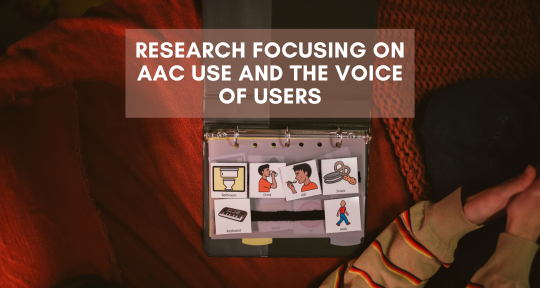Summary
AAC users want to be able to use their communication systems to communicate effectively in social situations.
Importance of Keeping Up With Research As A Teacher
We are required to make sure our practices are evidenced based, especially as special education teachers- it’s the law! We also need to recognize that research is ever evolving- we can’t just rely on the research we studies in graduate school. Previous education research rarely took into account the voices of the people who participated in our interventions. New research includes disabled voices more and more- and we need to listen to what they are telling us if we claim to care about student outcomes. If you are someone who is developing AAC devices for students, but you aren’t paying attention to the AAC community, you aren’t doing right by your students!
Why Is This Article on AAC Use Is Different
In this blog post I’m breaking down a qualitative synthesis by Broomfield et al., 2022. This study synthesized the research on AAC device use to specifically look at the values and outcomes that are important to people who actually use AAC devices. They looked at studies that centered voices of AAC users and asked them what they think is important to create a successful AAC device (and what success really means!) The synthesis is meant to help develop a PROM or patient reported outcome measure, a tool that clinicians use to gain insights from their patients when developing an intervention or course of treatment. The implications of this study could mean better tools for teachers and clinicians to use when including and centering plans for AAC development and training for their students. Overall, this one study has big implications for our practice and is a huge step forward for the AAC community!
Findings From The Study
There are so many takeaways from this synthesis- I really think you should read it through- but here are just a few of the ones I think are important for teachers in particular to implement.
- Customization- The ability to personalize was highly valuable to AAC users in this study. Having a device or system that was customizable contributed to a better ability to communicate their humanness and be understood by others. Frustration occured when the device or system does not reflect the vocabulary or meaning the user wished to convey, especially in social situations.
- Social Implications- Having an effective method of AAC significantly impacted the users’ social life. Users expressed a strong desire to have their devices express more natural communication in order to be effective social communicators. If AAC didn’t positively contribute to their ability to communicate socially, the user was less likely to use the AAC device.
- Training- AAC users benefited from personalized training to the specific needs of their AAC device, with a focus on navigational competency. When they didn’t feel confident navigating or using the whole system, they were less likely to engage with it. Some users felt they got effective training, and others felt that they were dependent on others to use and program the system.
- Acceptance- The acceptance of the AAC device greatly influenced whether it was used or abandoned. Positive encouragement from others to use it and patience while forming messages were cited as desired outcomes for AAC use. Users cited teacher and clinician encouragement as a big reason why they stuck with an AAC device in their early years.
Caveats of the Study
This study included several exclusion criteria that means that the findings can’t be applied to all AAC users. If a study included participants that were under the age of 12, had a diagnosis of autism, or had severe intellectual impairment, the results were excluded from the synthesis. As a result, we cannot say that ALL AAC users value the same things or have the same desired outcomes. It is also important to note that there is a common problem to most special education research present in this study- small sample size. This is another reason why we can’t take the findings of this synthesis and apply it to all AAC users.
Implications for Teachers on AAC Use
User centered design was a theme that was repeatedly mentioned in this synthesis. Educators and clinicians should focus on personalization, effective long-term training, and social dynamics that are hindered or enhanced by AAC. AAC use can be encouraged by making sure the device reflects how the user wants to be perceived, how they want to be presented, and what they want to use it for. Making sure that we are creating positive interactions with the AAC system could help our students engage with their device or system more.
If as educators we are keeping individuality at the forefront of our AAC implementation plans and involve the user as much as possible, we will be able to develop AAC systems that best meet the need of the learner. This is a great study to refer back to when sitting in IEP meetings for AAC users!
http://contact meIs there another area of research you’re interested in? I’d love to write a blog post to help out! You can contact me here to let me know!
